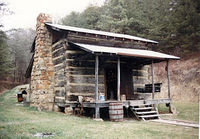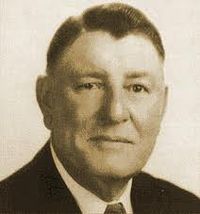Annotation:Kentucky Winder: Difference between revisions
m (Text replacement - "Century Gothic" to "sans-serif") |
No edit summary |
||
| Line 10: | Line 10: | ||
<div style="text-align: justify; direction: ltr; margin-bottom: 90px; margin-left: 70px; margin-right: 120px;"> | <div style="text-align: justify; direction: ltr; margin-bottom: 90px; margin-left: 70px; margin-right: 120px;"> | ||
<br> | <br> | ||
'''KENTUCKY WINDER'''. Old-Time, Breakdown. USA, Kentucky. G Major. Standard tuning (fiddle). AA'B (Milliner & Koken): ABB' (Titon). A 'winder' is a type of dance step. "Kentucky Winder," a variant of "[[Big Scioty]]" and "[[We'll All Go to Heaven When the Devil Goes Blind]]" is sourced to Magoffin County, Ky., fiddler John Salyer [http://www.oldtimemusic.com/FHOFSalyer.html] (1882-1952). Jeff Titon (2001) says that he knows of no other Kentucky musician to record this particular variant, which is 'crooked' or irregular in rhythm (depending on how it is barred, the 'A' part has 23 measures, the 'B' part 30 when repeated). | '''KENTUCKY WINDER'''. Old-Time, Breakdown. USA, Kentucky. G Major. Standard tuning (fiddle). AA'B (Milliner & Koken): ABB' (Titon). A 'winder' is a type of dance step. "Kentucky Winder," a variant of "[[Big Scioty]]" (the first strain is nearly identical) and "[[We'll All Go to Heaven When the Devil Goes Blind]]" is sourced to Magoffin County, Ky., fiddler John Salyer [http://www.oldtimemusic.com/FHOFSalyer.html] (1882-1952). Jeff Titon (2001) says that he knows of no other Kentucky musician to record this particular variant, which is 'crooked' or irregular in rhythm (depending on how it is barred, the 'A' part has 23 measures, the 'B' part 30 when repeated). | ||
<br> | <br> | ||
<br> | <br> | ||
Revision as of 18:17, 12 November 2019
X:1 T:Kentucky Winder S:John Salyer (1882-1952, Salyersville, Magoffin County, Ky.) M:C| L:1/8 N:From home recordings 1941-42 F:https://www.slippery-hill.com/recording/kentucky-winder-0 Z:Transcribed by Andrew Kuntz K:G +slide+BAB2 AGEG|AG2G G2Bd|edBG AGEG|AG2G G2G2| BAB2 AGEG|AG2G G2Bd|edBG AGEG|AG2G G2[G2c2]| (B_B)=BB AGEG|AG2G G2Bd|edBG AGEG|[M:2/4]AG2G || [M:5/4]g4 ge[D3d3]g-|[M:C|] ga b2 a2g2|bged BABd|[M:3/4]ef e2d2| [M:C|]efgf edBA|Bdef e2d2|BGBG DGEG|[M:2/4]AG2G| [M:5/4]g3g ed [D3B3]g-|[M:C|]ga b2 a2g2|bged BABd|[M:3/4]ef e2d2| [M:C|]efgf edBA|Bdef e2d2|BGBG DGEG|AG2G [G2B2][G2B2]||
KENTUCKY WINDER. Old-Time, Breakdown. USA, Kentucky. G Major. Standard tuning (fiddle). AA'B (Milliner & Koken): ABB' (Titon). A 'winder' is a type of dance step. "Kentucky Winder," a variant of "Big Scioty" (the first strain is nearly identical) and "We'll All Go to Heaven When the Devil Goes Blind" is sourced to Magoffin County, Ky., fiddler John Salyer [1] (1882-1952). Jeff Titon (2001) says that he knows of no other Kentucky musician to record this particular variant, which is 'crooked' or irregular in rhythm (depending on how it is barred, the 'A' part has 23 measures, the 'B' part 30 when repeated).


